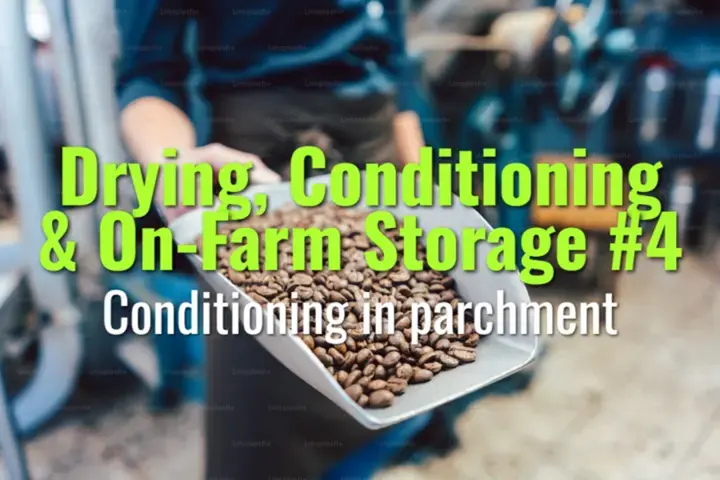Conditioning in parchment
This topic explains the role of conditioning in parchment coffee after drying, how it stabilizes beans before hulling, and why this step is vital for flavor consistency and market quality.
- Coffee Basics Nerds
- 2 min read
Article 4 of 12 in Drying, Conditioning & On-Farm Storage/

What is Conditioning?
- Conditioning is the resting period where dried coffee in parchment (10–12% moisture) is stored before hulling.
- Allows moisture to redistribute evenly inside beans, stabilizing them for storage, milling, and roasting.
Why Parchment Storage?
- Parchment layer acts as a protective barrier, shielding beans from humidity swings, pests, and odors.
- Maintains bean integrity until closer to export.
Duration of Conditioning
- Typically 4–8 weeks.
- Some specialty lots conditioned longer (up to 3 months) to harmonize flavors.
- Must be monitored to prevent rehydration or over-drying.
Quality Benefits
- Moisture equilibrium: Prevents uneven roasting and cup inconsistency.
- Flavor development: Resting period softens harsh notes, enhances sweetness and clarity.
- Storage stability: Protects green coffee quality during transit.
Best Practices
- Store parchment in cool, dry, well-ventilated warehouses.
- Keep relative humidity <65%.
- Use pallets to keep bags off the floor.
- Protect from pests, odors, and direct sunlight.
- Rotate stock (first in, first out) to maintain freshness.
Risks if Skipped
- Beans may roast unevenly if moisture not equilibrated.
- Higher risk of instability, mold, or early quality decline.
- Reduced ability to meet specialty buyer expectations.
Certification & Traceability
- Many certifications (Organic, Fairtrade, Rainforest Alliance) encourage proper conditioning as part of post-harvest handling.
- Documentation of conditioning improves buyer confidence in lot stability.
Lasting Importance
Conditioning in parchment is a vital bridge between drying and hulling. It protects and stabilizes coffee, ensuring that the effort invested in cultivation and processing is preserved all the way to the roaster and cup.
You might also like:
- Tags:
- Lasting Importance
- Green Coffee
- Best Practices
- Coffee Quality
- Rainforest Alliance
- Higher Risk
- Sweetness Clarity
- Post Harvest
- Flavor Development
- Rotate Stock
- Organic Fairtrade
- Cool Dry
- Specialty Lots
- Certifications Organic
- Fairtrade Rainforest
- Uneven Roasting
- Enhances Sweetness
- Relative Humidity
- Bean Integrity
- Beans Roast
- Buyer Confidence
- Quality Benefits